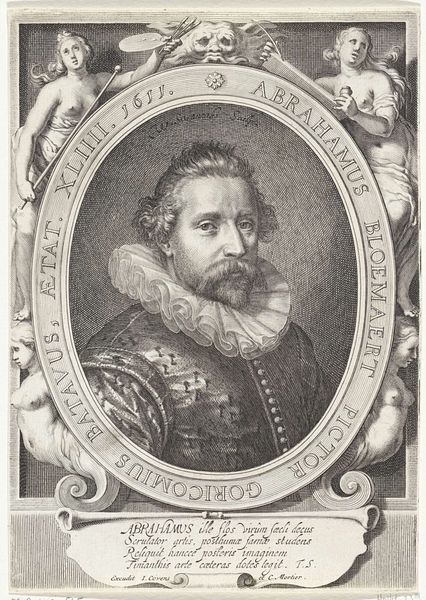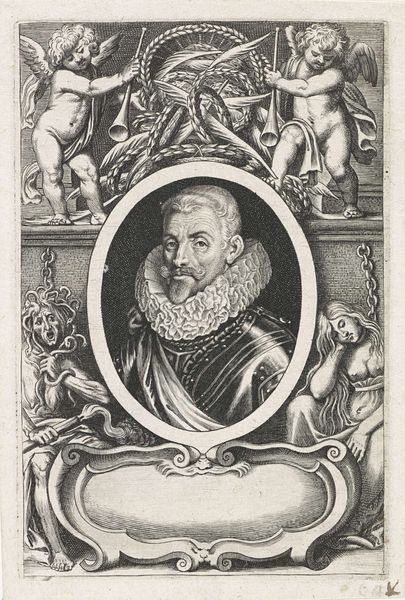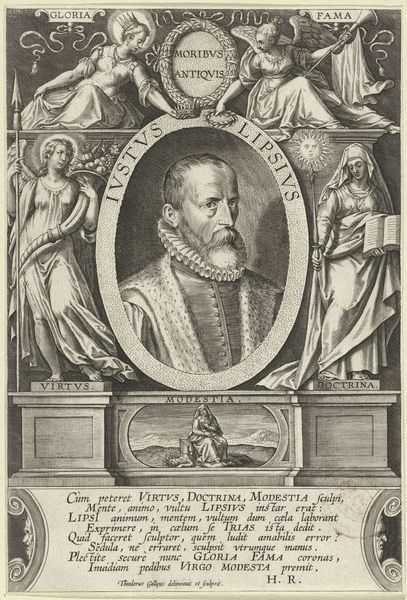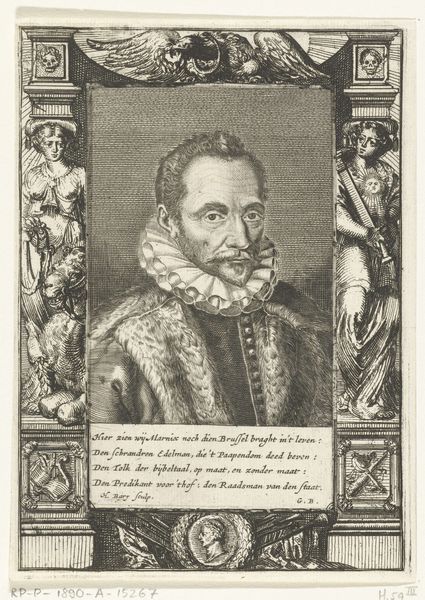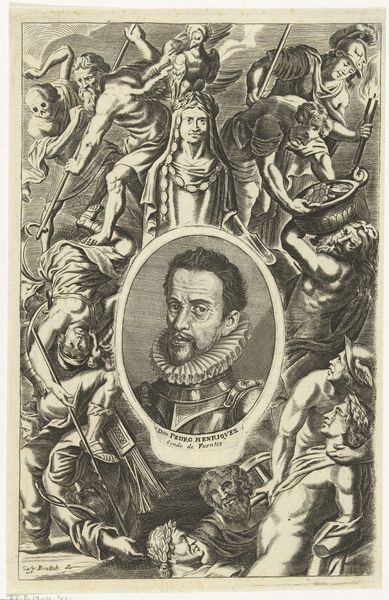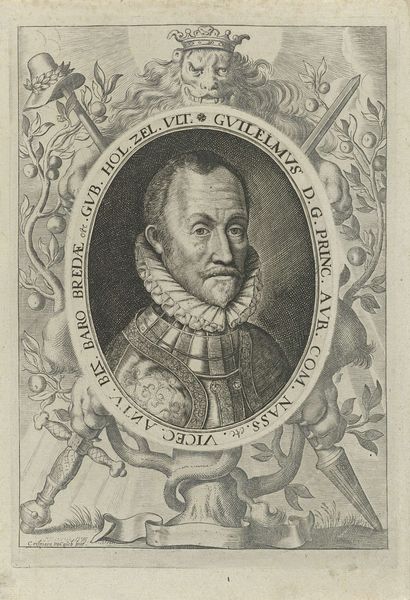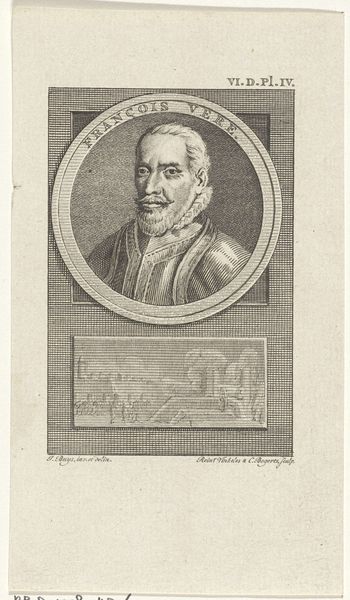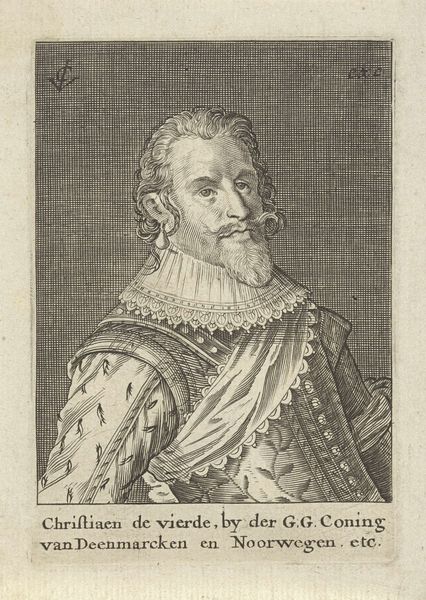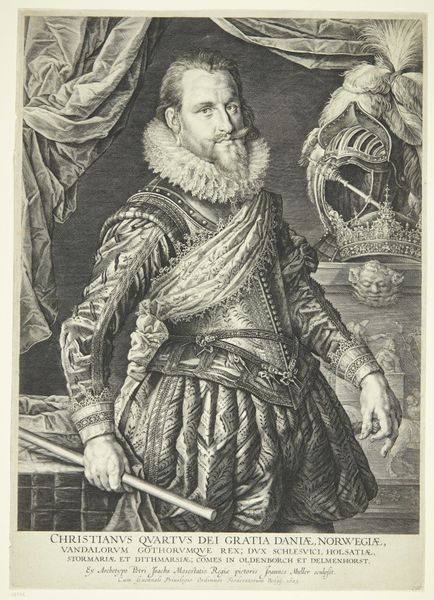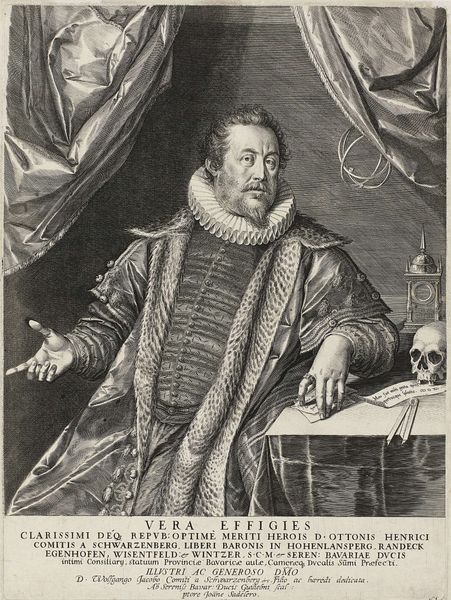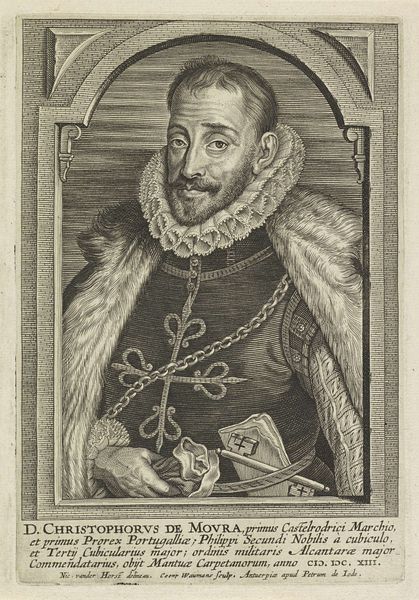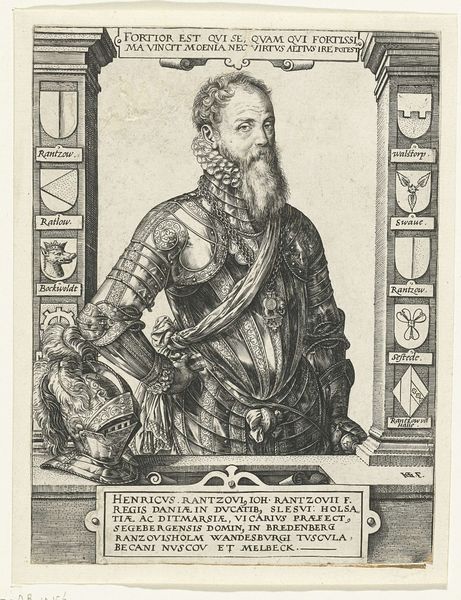
Portretten van Maerten de Vos, Jan van der Straet en Jan Gols van Kaiserswerth 1764
0:00
0:00
Dimensions: height 152 mm, width 101 mm
Copyright: Rijks Museum: Open Domain
Curator: This engraving from 1764 is titled "Portretten van Maerten de Vos, Jan van der Straet en Jan Gols van Kaiserswerth" and it is by Jan l' Admiral. Three men are captured within the frame, each in a distinct portrait style. Editor: They seem imposing. Stern and unwavering. The sharp lines and limited contrast grant the faces a graphic strength that, frankly, feels very modern, despite the obvious signs of age and traditional style. Curator: This image compels us to question the relationship between artistic representation and societal power during that era. What narratives were privileged? What messages were encoded through portraiture? I'm especially interested in exploring how these individuals contributed to, or perhaps even challenged, prevailing norms and discourses. Editor: My eye is immediately drawn to the detail. Note the precise rendering of their clothes, their facial hair. The oval frame gives prominence to one subject, implying status, whilst the artist captures the texture of skin and fabric in these minute marks, turning people into symbols. Is that simply celebrating their presence, or conveying meaning? Curator: We can contextualize these individuals within the social and intellectual currents of their time. Consider the rise of individualism and the Enlightenment values shaping European society. The meticulous rendering serves to not only capture likeness, but also to underscore their individual importance, especially within these emerging philosophies. It begs the question: How did prevailing social structures influence the artist's approach and interpretation of each subject's identity? Editor: I wonder how audiences then interpreted these symbols. The ruffs, the beards – visual cues communicating status. These portraits weren't just about representing individuals, but also confirming and legitimizing a hierarchy. This iconography isn't exclusive to this print; how did this image engage in the shared lexicon of portraiture at that time? Curator: Examining these symbols, from a cultural perspective, reveals how artistic traditions evolve, resist, or reinforce dominant social structures and how notions of identity get constantly shaped through art history. Editor: I appreciate this insight, bringing us beyond just artistic style and opening avenues to the deeper meanings. Thank you!
Comments
No comments
Be the first to comment and join the conversation on the ultimate creative platform.

